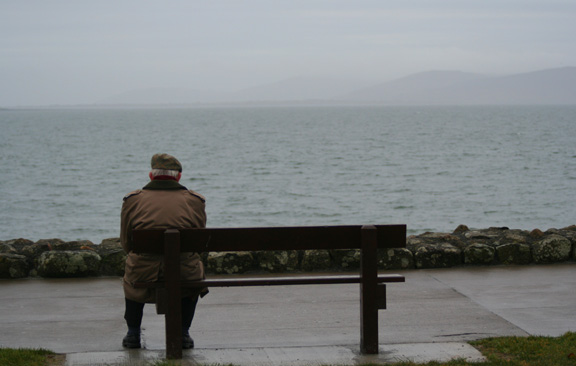A third of Irish adults over the age of 50 report feeling lonely some of the time, according to a study carried out by Trinity College Dublin. Among those over 75, loneliness is even more prevalent. Unsurprisingly, loneliness is often accompanied by depression.
A certain degree of loneliness is, I think, inevitable in the older years. For parents, the offspring have usually left home and are pursuing their own lives. Among married people, losing a spouse becomes more common – or caring for a spouse who is disabled in mind or body, which can also be a lonesome calling.
Among single people, the realisation that you are solo in the world hits home, particularly as parents and older family members depart.
I remember an aunt of mine, a single woman, saying “I’m an orphan, you know”. In my youthful callowness, I thought “you’re 60 years of age – it’s normal to be an ‘orphan’ at your age”. Later, I came to understand.
I came to understand that being sociable doesn’t always obliterate loneliness”
People over 50 begin to notice that they are attending more funerals than weddings or christenings. That strikes a note of peer-group loneliness too.
One way, possibly, to approach older-age loneliness, is to accept that it will happen, and to pray for the gift of fortitude in facing it. As a fairly sociable person, I never thought I would experience loneliness, but I came to understand that being sociable doesn’t always obliterate loneliness: it’s an inner condition – an existential condition – rather than a situation to be alleviated by joining a chess club or a knitting circle.
You can have lots of social connections and still feel that there’s no one, really, to share an intimate human contact. The TCD study showed that 20% of those with plenty of social contacts still feel lonely.
At the same time, joining in activities and maintaining hobbies is certainly to be recommended. And by the way, many studies by the noted Pew Research Center in the US have shown that the least isolated people are those who regularly go to church.
The TCD study reveals that people in rural Ireland are less likely to feel isolated and lonely than Dubliners. Another reason to value the social fabric of countryside Ireland.
***
I wonder if British Brexit procedures should be renamed ‘the Kathleen Mavourneen’, as in the song’s peerless line: “It could be for years and it could be forever…”
***
How easily walls are erected
How well I remember the fall of the Berlin Wall, which occurred some 40 years ago – on November 9, 1989. Watched on TV around the world, it was a moment of awe, and a realisation that with it, the Soviet Union would begin to crumble.
But there’s something else I remember about the Wall that divided Berlin between East and West: how complacently it was accepted when it existed.
I first visited Berlin in 1986, and found the stories around the Wall very poignant. People had been shot in cold blood as they tried to flee from one part of Germany to another.
My sons, then young boys, were particularly distressed by the story of Peter Fechter, an 18-year-old bricklayer who was shot, without warning, by an East German guard as he tried to cross from east to west. He bled to death, lying in the ‘no man’s land’ between the two sectors: nobody came to his aid.
As a freelance journalist, I found it difficult get any media outlet interested in a feature about the Wall. It was regarded as an accepted fact of life. It wasn’t news.
But, inspired by Poland’s Solidarity movement, and John Paul II, the Lutheran Church in East Germany was beginning to hold vigils and raise consciousness about the moral injustices imposed by the Communist regime. Only three years later, the Berlin Wall was indeed news.
Visiting Berlin again in 2014, it was touching to see a monument [pictured above], on the spot where he fell, for Peter Fechter.


 Mary Kenny
Mary Kenny
